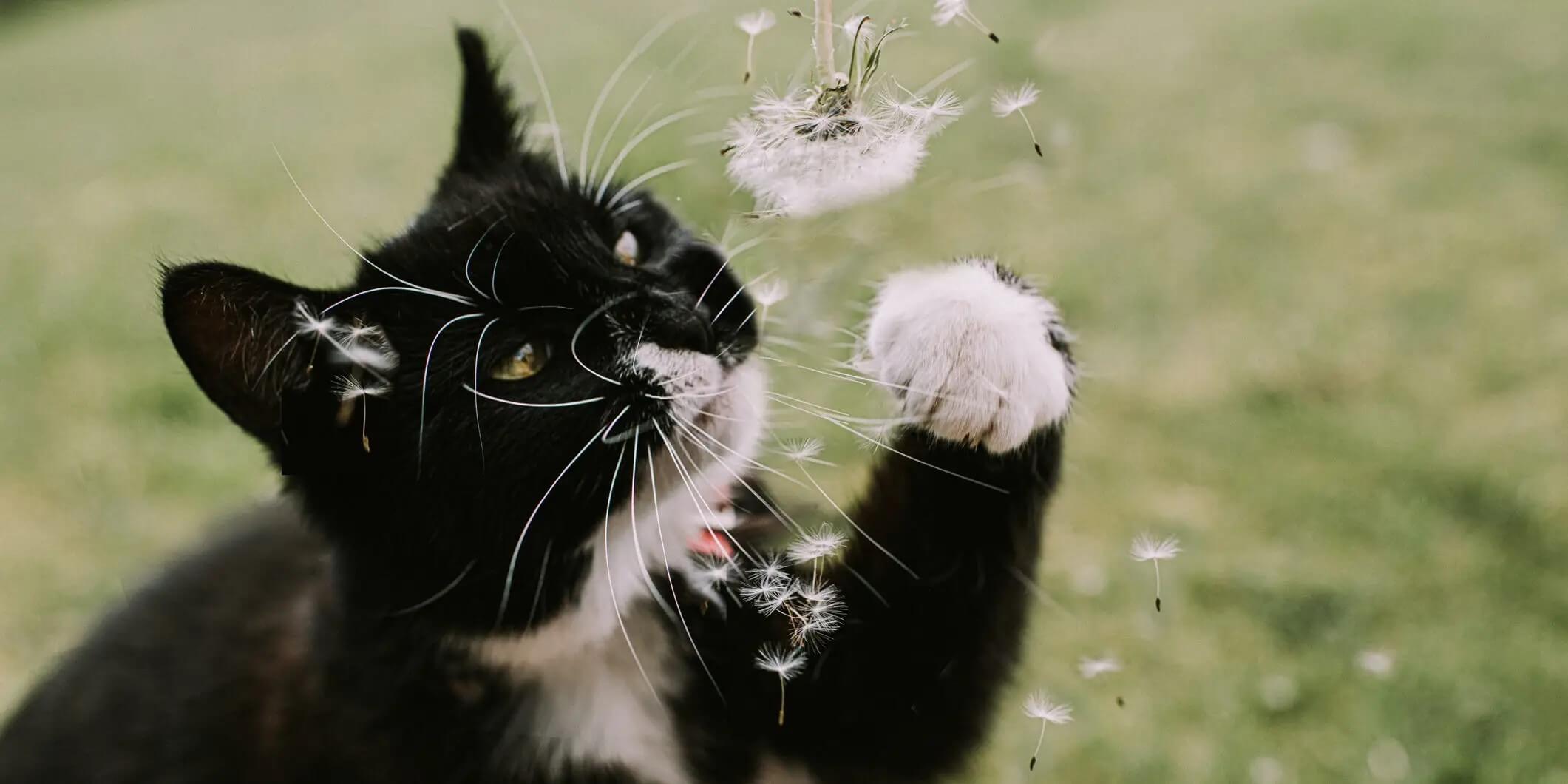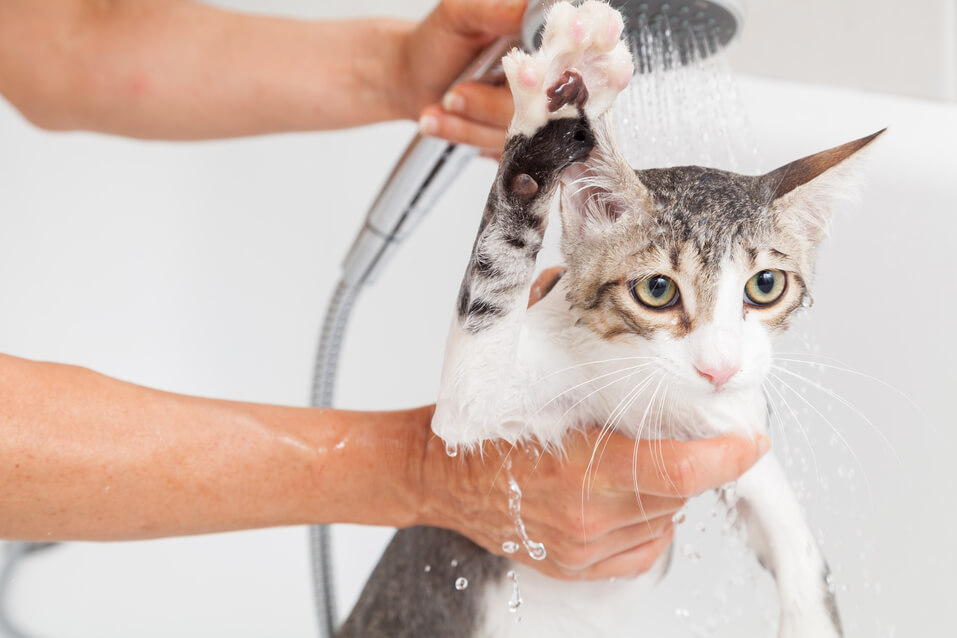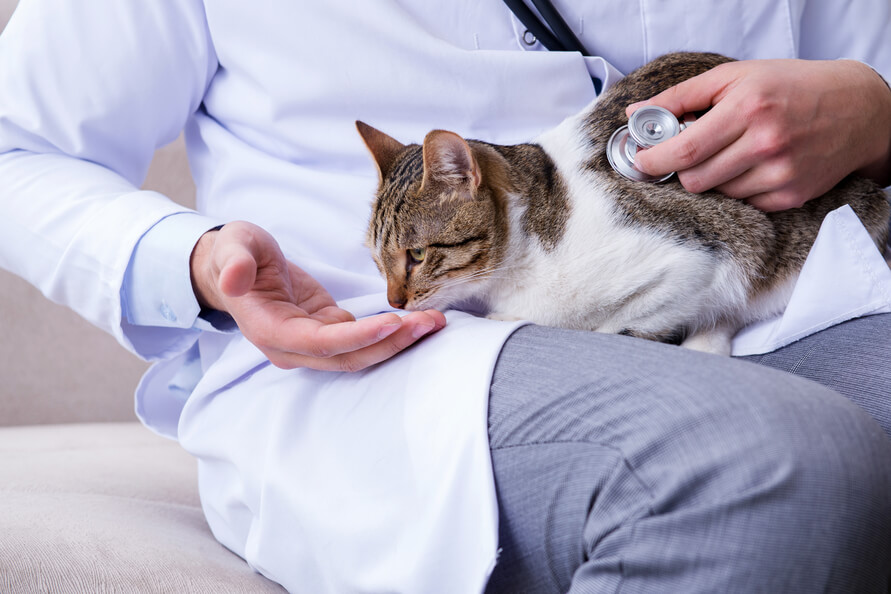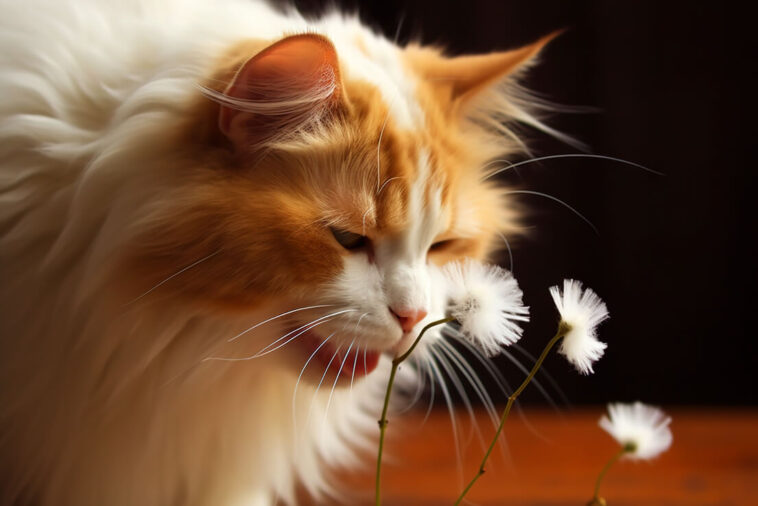Cat allergies are a prevalent concern for many pet owners, impacting both the well-being of the individual and the feline companion. Understanding the basics of cat allergies is crucial for navigating this common challenge. This introduction provides a concise overview of the key aspects surrounding cat allergies, highlights the prevalent symptoms that individuals may experience, and emphasizes the paramount importance of effective allergy management for cat owners.
Brief Overview of Cat Allergies
Cat allergies are immune responses triggered by proteins present in a cat’s dander, saliva, or urine. These proteins, known as allergens, can provoke a range of allergic reactions in susceptible individuals. The prevalence of cat allergies underscores the need for proactive measures to address and alleviate these concerns.
Common Symptoms of Cat Allergies
Recognizing the symptoms of cat allergies is crucial for early intervention and effective management. Symptoms may include sneezing, itchy or watery eyes, nasal congestion, and skin reactions. Understanding these indicators enables cat owners to promptly seek solutions, creating a healthier living environment for both humans and their feline companions.
Importance of Managing Cat Allergies for Cat Owners
Effectively managing cat allergies is not only beneficial for the allergic individual’s health but also contributes to a harmonious relationship between cat and owner. Unchecked allergies can lead to chronic discomfort, impacting daily life and the quality of the human-feline bond. By prioritizing allergy management, cat owners can create a conducive environment that allows for a fulfilling and sustainable companionship with their beloved pets.

For individuals seeking practical solutions and insights into managing cat allergies, this article explores various strategies, from home adjustments to medical interventions, offering a comprehensive guide to enhance the well-being of both cat owners and their feline friends.
Understanding Cat Allergies
In this section, we delve into the intricacies of cat allergies, providing valuable insights into their causes, the distinction between various allergens, and the potential health implications for individuals susceptible to these allergies.
Explanation of What Causes Cat Allergies
Cat allergies stem from the body’s immune response to specific proteins found in a cat’s dander, saliva, and urine. These proteins, known as allergens, can trigger an exaggerated immune reaction in some people, leading to the manifestation of allergic symptoms. Understanding the root cause of cat allergies lays the foundation for implementing targeted strategies to mitigate their effects.
Differentiating Between Cat Dander, Saliva, and Urine Allergies
Cat allergens manifest in different forms, with dander, saliva, and urine being the primary sources. Dander consists of tiny, often microscopic, flecks of skin shed by cats, while saliva and urine contain proteins that can also elicit allergic reactions. Distinguishing between these allergens is crucial for tailoring effective allergy management strategies, as the nature of exposure may vary.
Overview of Allergic Reactions and Their Impact on Health
Allergic reactions to cat allergens can range from mild to severe, affecting the respiratory system, skin, and eyes. Understanding the diverse ways in which these reactions manifest is essential for individuals navigating cat allergies. Additionally, we explore the potential impact of prolonged exposure on overall health, emphasizing the importance of proactive allergy management.
By gaining a comprehensive understanding of what causes cat allergies, differentiating between various allergens, and recognizing the potential health repercussions, individuals can make informed decisions in managing and mitigating the effects of cat allergies in their lives.
Identifying Cat Allergies
Embarking on the journey to identify cat allergies involves a combination of self-awareness and professional guidance. In this section, we explore the available allergy testing options, common signs that may indicate cat allergies in humans, and stress the pivotal role of consulting with a healthcare professional for an accurate diagnosis.

Discussing Allergy Testing Options
To pinpoint cat allergies, various testing methods are available. From skin prick tests to blood tests measuring specific antibodies, individuals have options for uncovering their allergic sensitivities. Delving into these testing methods provides valuable insights for those seeking a clearer understanding of their allergic triggers.
Recognizing Common Signs of Cat Allergies in Humans
Recognizing the telltale signs of cat allergies is essential for early intervention. From persistent sneezing and itchy eyes to more subtle symptoms like fatigue, we explore the spectrum of indicators that may signal an allergic reaction. Heightening awareness of these signs empowers individuals to take proactive steps toward allergy management.
Importance of Consulting with a Healthcare Professional for Accurate Diagnosis
While self-awareness is crucial, the expertise of a healthcare professional is indispensable for an accurate diagnosis. This section underscores the significance of consulting with allergists or immunologists. These specialists can interpret test results, provide personalized insights, and guide individuals toward effective allergy management strategies tailored to their unique needs.
By understanding the array of allergy testing options, recognizing common signs of cat allergies, and emphasizing the necessity of professional consultation, individuals can take proactive steps toward identifying and managing cat allergies. Seeking guidance from healthcare professionals ensures a comprehensive and accurate approach to allergy diagnosis and subsequent care.
Creating an Allergy-Friendly Home
Crafting an environment conducive to allergy management is pivotal for individuals navigating cat allergies. This section explores practical tips to minimize cat allergies within the home, considerations when choosing hypoallergenic cat breeds, and the effectiveness of utilizing air purifiers and HEPA filters to reduce airborne allergens.

Tips for Minimizing Cat Allergens in the Home Environment
Implementing simple yet effective strategies can significantly reduce cat allergens in your living space. This includes regular and thorough cleaning routines, such as frequent vacuuming, washing bedding, and using allergen-resistant covers on furniture. Additionally, creating designated cat-free zones within the home can provide allergy sufferers with safe havens to retreat to.
Choosing Hypoallergenic Cat Breeds
Opting for hypoallergenic cat breeds can be a proactive step in managing cat allergies. These breeds typically produce fewer allergens or shed less dander, making them more suitable for individuals with sensitivities. We explore popular hypoallergenic breeds and considerations when selecting a cat that aligns with allergy management goals.

Using Air Purifiers and HEPA Filters to Reduce Airborne Allergens
Harnessing technology to combat airborne allergens, air purifiers equipped with High-Efficiency Particulate Air (HEPA) filters prove valuable in creating a healthier indoor environment. This section delves into the benefits of air purifiers, their role in trapping allergens, and considerations when selecting the most suitable devices for cat allergy management.
By incorporating these practical tips for minimizing cat allergens, insights into hypoallergenic cat breeds, and the use of air purifiers with HEPA filters, individuals can actively create an allergy-friendly home environment. These proactive measures contribute to a more comfortable living space for both cat owners and those prone to cat allergies.
Cat Grooming and Hygiene

Ensuring proper grooming and hygiene practices for your feline companion plays a pivotal role in managing cat allergies. In this section, we explore the significance of regular cat grooming, provide practical tips for bathing a cat to minimize allergens, and guide cat owners in selecting hypoallergenic grooming products for a healthier living environment.
Importance of Regular Cat Grooming
Regular grooming is not just about maintaining your cat’s appearance; it is a crucial aspect of allergy management. Brushing helps remove loose fur and dander, reducing the overall allergen load in your home. We delve into the importance of establishing a consistent grooming routine to promote both the cat’s well-being and the comfort of allergy-sensitive individuals.
Tips for Bathing a Cat to Reduce Allergens
While not all cats enjoy water, occasional baths can be an effective way to minimize allergens. This section provides practical tips for cat owners, including the use of cat-friendly shampoos, proper bathing techniques, and creating a positive bathing experience for the cat. By incorporating these suggestions, individuals can significantly reduce the presence of allergens on their cat’s fur.
Choosing Hypoallergenic Grooming Products

Opting for hypoallergenic grooming products can contribute to a healthier living environment for both cats and their owners. We explore the significance of selecting grooming products specifically designed to minimize allergens. Information on hypoallergenic shampoos, wipes, and grooming tools empowers cat owners to make informed choices that align with their allergy management goals.
Managing Cat Allergies with Lifestyle Changes
Effectively managing cat allergies often involves making strategic lifestyle changes. This section explores practical approaches, including designating cat-free zones, creating a cleaning schedule to minimize allergen exposure, and encouraging outdoor activities for the cat to reduce indoor allergens.
Designating Cat-Free Zones in the Home
Establishing specific areas within the home as cat-free zones can significantly reduce allergen exposure. This section outlines the importance of creating havens where allergic individuals can retreat without the risk of allergen accumulation. Insights into choosing and maintaining these zones contribute to a more comfortable living space for everyone.

Creating a Cleaning Schedule to Minimize Allergen Exposure
Implementing a consistent cleaning schedule is a key component of allergy management. This includes vacuuming, dusting, and other cleaning activities that target allergen-prone areas. We delve into the importance of regular cleaning practices and offer practical tips for minimizing allergen exposure throughout the home.
Encouraging Outdoor Activities for the Cat to Reduce Indoor Allergens
Promoting outdoor activities for your cat can be an effective strategy to reduce indoor allergens. This section explores the benefits of outdoor play, providing insights into creating a cat-friendly outdoor space and encouraging activities that help minimize allergen accumulation indoors.
By implementing these lifestyle changes, including the designation of cat-free zones, adherence to a cleaning schedule, and encouraging outdoor activities for cats, individuals can actively manage and reduce cat allergies in their homes. These practical strategies contribute to a healthier living environment for both cat owners and those with sensitivities.
Medical Interventions: Managing Cat Allergies
Living with cat allergies doesn’t mean resigning yourself to a constant battle against symptoms. In this section, we explore various medical interventions designed to help individuals effectively manage cat allergies. From allergy medications to innovative immunotherapy options, and the importance of consulting healthcare professionals for personalized advice, let’s delve into the world of medical solutions for cat allergies.
Overview of Allergy Medications for Cat Allergies
For those seeking symptomatic relief from cat allergies, a range of allergy medications is available. Antihistamines, decongestants, and nasal corticosteroids are commonly prescribed to alleviate symptoms such as sneezing, runny nose, and itchy eyes. These medications work by either blocking histamine or reducing inflammation, providing temporary relief for individuals exposed to cat allergens.

While over-the-counter options exist, consulting with a healthcare professional is essential to determine the most suitable medication based on individual health factors and the severity of cat allergy symptoms.
Immunotherapy Options and Their Effectiveness
For individuals seeking a more long-term solution, immunotherapy offers a promising avenue. Allergen-specific immunotherapy, commonly known as allergy shots, involves injecting small amounts of cat allergens under the skin over time. This gradual exposure aims to desensitize the immune system, reducing the severity of allergic reactions. Immunotherapy has shown effectiveness in not only alleviating symptoms but also potentially modifying the course of cat allergies.
It’s crucial to note that the decision to pursue immunotherapy should be made in consultation with an allergist or immunologist. These specialists can assess individual health conditions, discuss potential benefits and risks, and create a personalized immunotherapy plan tailored to specific needs.
Consultation with Healthcare Professionals for Personalized Advice
When it comes to managing cat allergies, there is no one-size-fits-all solution. The importance of consulting healthcare professionals cannot be overstated. Allergists and immunologists possess the expertise to conduct thorough assessments, diagnose allergies accurately, and formulate personalized treatment plans.

During a consultation, healthcare professionals may perform allergy testing, discuss medical history, and consider lifestyle factors to provide comprehensive advice. Whether it’s prescribing suitable medications, recommending immunotherapy, or offering guidance on lifestyle adjustments, healthcare professionals play a pivotal role in helping individuals effectively manage their cat allergies.
Natural Remedies and Homeopathic Approaches: Nurturing Allergy Relief Naturally
In the pursuit of managing cat allergies, many individuals explore the realm of natural remedies and homeopathic approaches. This section sheds light on the potential benefits of natural solutions, delves into holistic approaches to allergy management, and emphasizes the crucial step of consulting healthcare professionals before experimenting with alternative treatments.
Discussion of Natural Remedies for Managing Cat Allergies
Nature offers an array of remedies that may provide relief for those grappling with cat allergies. From herbal supplements to dietary adjustments, we discuss natural options that individuals might consider incorporating into their allergy management strategies. Understanding the properties of these remedies allows for an informed exploration of alternative avenues for cat allergy relief.
Exploring Holistic Approaches to Allergy Management
Holistic approaches take a comprehensive view of well-being, addressing not only the symptoms but also the underlying factors contributing to cat allergies. This section explores holistic practices like acupuncture, yoga, and mindfulness techniques that some individuals find beneficial in managing allergy symptoms. By considering the whole person, holistic approaches aim to promote balance and alleviate allergic reactions.
Importance of Consulting with a Healthcare Professional Before Trying Alternative Treatments
While natural remedies and holistic approaches can be appealing, it’s paramount to consult with healthcare professionals before integrating alternative treatments into your allergy management plan. Not all remedies are universally safe or effective, and individual health conditions must be taken into account. Consulting with allergists or healthcare providers ensures that any chosen natural remedy aligns with personal health goals and doesn’t compromise overall well-being.
In navigating the realm of natural remedies and homeopathic approaches for cat allergy relief, individuals can empower themselves with knowledge. From herbal supplements to holistic practices, this exploration allows for a personalized approach to managing cat allergies. However, the guidance of healthcare professionals remains essential to ensure the safety and effectiveness of alternative treatments in the context of individual health.
Tips for Cat Owners: Fostering a Healthy Environment for Both Feline Friends and Allergy-Prone Individuals
Cat owners play a pivotal role in managing and mitigating cat allergies. This section offers practical tips designed to support overall cat health, minimize allergen production, monitor the cat’s behavior for signs of discomfort, and highlights the importance of seeking advice from a veterinarian for additional guidance.
Supporting Overall Health to Minimize Allergen Production
A healthy cat is more likely to produce fewer allergens, contributing to a more comfortable living environment for allergy-prone individuals. This section explores dietary considerations, grooming practices, and preventive healthcare measures that cat owners can implement to support their feline companion’s overall health. By understanding the factors influencing allergen production, cat owners can take proactive steps to minimize allergic reactions.
Keeping a Close Eye on the Cat’s Behavior for Signs of Discomfort
Cats may exhibit subtle signs of discomfort or distress when allergies are at play. This section outlines behavioral cues, such as excessive scratching, changes in grooming habits, or alterations in appetite, that may indicate allergic reactions. By staying vigilant and attuned to these signals, cat owners can promptly address potential allergy issues and seek appropriate interventions.
Seeking Advice from a Veterinarian for Additional Guidance
When it comes to the well-being of a cat, the expertise of a veterinarian is invaluable. This section emphasizes the importance of consulting with a veterinarian for additional guidance on managing cat allergies. Veterinarians can provide insights into specific dietary recommendations, grooming practices, and may recommend suitable products to create a healthier environment for both the cat and its owner.
Conclusion: Navigating Cat Allergies for a Harmonious Connection
As we conclude our exploration of cat allergies, let’s recap key strategies, encourage cat owners to personalize their approach to allergy management, and share closing thoughts on maintaining a healthy relationship with a cat despite allergies.
Recap of Key Strategies for Dealing with Cat Allergies
Throughout this guide, we’ve explored numerous strategies for effective cat allergy management. From lifestyle adjustments and home modifications to medical interventions and natural remedies, the key lies in a holistic approach. Regular grooming, creating allergen-free zones, and considering alternative treatments are crucial components in managing cat allergies.
Encouragement for Cat Owners to Find a Personalized Approach to Allergy Management
Every cat-owner duo is unique, and so is the journey of managing cat allergies. This conclusion encourages cat owners to explore and experiment, seeking a personalized approach that aligns with their lifestyle and their feline companion’s needs. By combining various strategies and adapting them to individual circumstances, cat owners can discover the most effective allergy management plan for their specific situation.
Closing Thoughts on Maintaining a Healthy and Happy Relationship with a Cat Despite Allergies
The presence of cat allergies doesn’t have to diminish the joy of having a cat companion. In closing, we emphasize that with dedication, awareness, and a proactive mindset, cat owners can maintain a healthy and happy relationship with their feline friends. Whether through medical interventions, lifestyle adjustments, or a combination of strategies, the bond between a cat and its owner can flourish, enhancing both parties’ well-being.
In the grand tapestry of cat ownership, navigating allergies is just one thread. By weaving together the insights and strategies provided, cat owners can create a harmonious and fulfilling connection with their beloved feline companions, ensuring a life of joy and companionship







GIPHY App Key not set. Please check settings